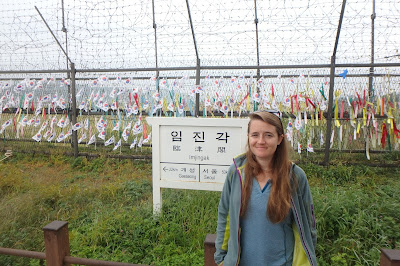Daegu was our next stop...
We came to visit Haein-sa the repository of the Tripitaka Koreana, the largest existing library of the Buddhist canon.

As always, the walk through the park was scenic and soothing.
The temple complex was first built in the year 802.
All the bells, but no whistles. Drums though...
Temple guardians.
The Tripitaka Koreana are carved on wooden tablets and stored in specially constructed buildings, featuring natural passive ventilation and extended eaves to keep the sun off the collection.
Concoctions of minerals under the floors absorb moisture when it's too wet, but humidifies the library when it's too dry.
The tablets are birch treated in salt water. Each one was hand engraved. The Korean government once built a special climate controlled storage facility for the tablets. The tablets began to mildew in their new high tech residence, so they were returned to their 1200 year old home.

























